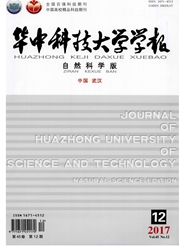

 中文摘要:
中文摘要:
为了研究不同热边界条件对熔积直接成形金属零件翘曲变形的影响,运用有限元法建立了三维模型,通过变换冷却和加热条件来分析直壁件熔积成形过程在不同热边界条件成形过程中温度、应力变化和最终翘曲变形.模拟结果表明:熔积过程中运用随焊冷却技术,能使熔积层温度迅速降到接近环境温度,并在随后的时间内保持很低的温度梯度,从而减小了冷却阶段的应力水平,使得翘曲变形量降低;而熔积成形前对基板预热处理会增加热积累和温度梯度,导致残余应力及翘曲变形量的增加.
 英文摘要:
英文摘要:
To study the influence of different thermal boundary conditions on the buckling deformation in the metal deposition manufacturing process,a three-dimensional finite model of straight wall was established.Through changing the cooling and heating condition of the component,the temperature-stress variation and final buckling deformation for different thermal boundary conditions was investigated.Simulation results demonstrate that the temperature of deposition layer rapidly drops to near environment temperature and stays with low temperature gradient by quick chilling following after the heat source,and then lessens the buckling deformation for the low stress condition in the cooling stage.But preheating before the deposition process increases the heat accumulation and temperature gradient,then leads to the rising of both residual stress and buckling deformation in the cooling stage.
 同期刊论文项目
同期刊论文项目
 同项目期刊论文
同项目期刊论文
 Fabrication of finely structured silicon-supported SOFC with anode deposited by multi-phase plasma s
Fabrication of finely structured silicon-supported SOFC with anode deposited by multi-phase plasma s Improving prediction accuracy of thermal analysis for weld-based additive manufacturing by calibrati
Improving prediction accuracy of thermal analysis for weld-based additive manufacturing by calibrati Modeling of the moving induction heating used as secondary heat source in weld-based additive manufa
Modeling of the moving induction heating used as secondary heat source in weld-based additive manufa Numerical simulation of the transient multiphase field during plasma deposition manufacturing compos
Numerical simulation of the transient multiphase field during plasma deposition manufacturing compos Hybrid plasma deposition and milling for an aeroengine double helix integral impeller made of supera
Hybrid plasma deposition and milling for an aeroengine double helix integral impeller made of supera Multi-axis Path Planning for Electromagnetic-compressed Plasma Deposition Manufacturing Based on STL
Multi-axis Path Planning for Electromagnetic-compressed Plasma Deposition Manufacturing Based on STL Multiscale numerical simulations of heat and mass transfer and grain growth during plasma deposition
Multiscale numerical simulations of heat and mass transfer and grain growth during plasma deposition A Flexible Synchronous Powder Feeder for Electromagnetism Compress Digital Manufacturing of FGM Meta
A Flexible Synchronous Powder Feeder for Electromagnetism Compress Digital Manufacturing of FGM Meta 期刊信息
期刊信息
